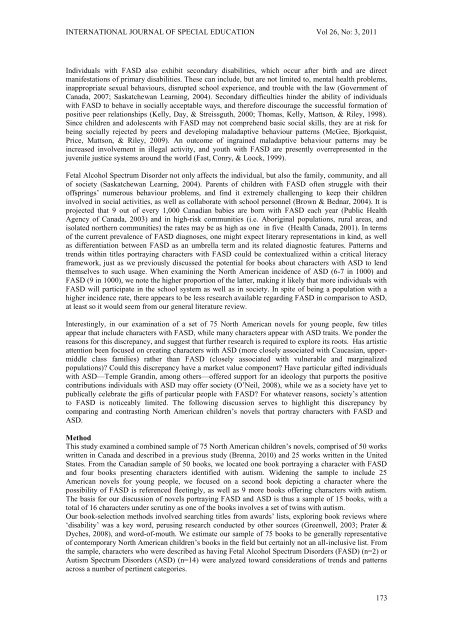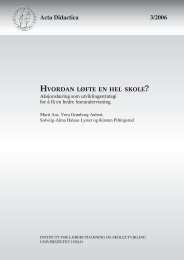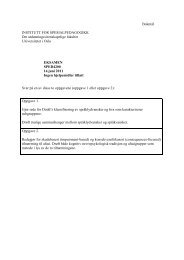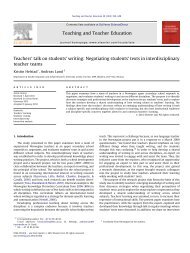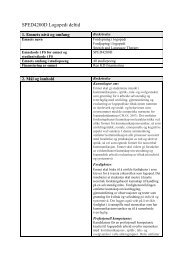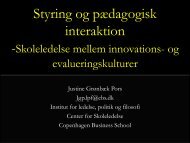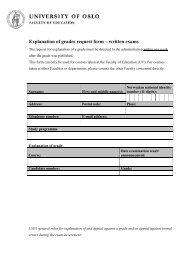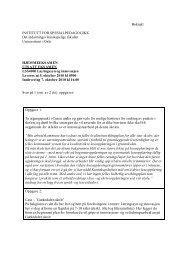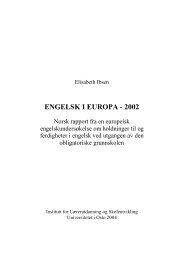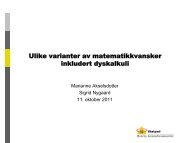International Journal Special Education
International Journal Special Education
International Journal Special Education
Create successful ePaper yourself
Turn your PDF publications into a flip-book with our unique Google optimized e-Paper software.
INTERNATIONAL JOURNAL OF SPECIAL EDUCATION Vol 26, No: 3, 2011Individuals with FASD also exhibit secondary disabilities, which occur after birth and are directmanifestations of primary disabilities. These can include, but are not limited to, mental health problems,inappropriate sexual behaviours, disrupted school experience, and trouble with the law (Government ofCanada, 2007; Saskatchewan Learning, 2004). Secondary difficulties hinder the ability of individualswith FASD to behave in socially acceptable ways, and therefore discourage the successful formation ofpositive peer relationships (Kelly, Day, & Streissguth, 2000; Thomas, Kelly, Mattson, & Riley, 1998).Since children and adolescents with FASD may not comprehend basic social skills, they are at risk forbeing socially rejected by peers and developing maladaptive behaviour patterns (McGee, Bjorkquist,Price, Mattson, & Riley, 2009). An outcome of ingrained maladaptive behaviour patterns may beincreased involvement in illegal activity, and youth with FASD are presently overrepresented in thejuvenile justice systems around the world (Fast, Conry, & Loock, 1999).Fetal Alcohol Spectrum Disorder not only affects the individual, but also the family, community, and allof society (Saskatchewan Learning, 2004). Parents of children with FASD often struggle with theiroffsprings’ numerous behaviour problems, and find it extremely challenging to keep their childreninvolved in social activities, as well as collaborate with school personnel (Brown & Bednar, 2004). It isprojected that 9 out of every 1,000 Canadian babies are born with FASD each year (Public HealthAgency of Canada, 2003) and in high-risk communities (i.e. Aboriginal populations, rural areas, andisolated northern communities) the rates may be as high as one in five (Health Canada, 2001). In termsof the current prevalence of FASD diagnoses, one might expect literary representations in kind, as wellas differentiation between FASD as an umbrella term and its related diagnostic features. Patterns andtrends within titles portraying characters with FASD could be contextualized within a critical literacyframework, just as we previously discussed the potential for books about characters with ASD to lendthemselves to such usage. When examining the North American incidence of ASD (6-7 in 1000) andFASD (9 in 1000), we note the higher proportion of the latter, making it likely that more individuals withFASD will participate in the school system as well as in society. In spite of being a population with ahigher incidence rate, there appears to be less research available regarding FASD in comparison to ASD,at least so it would seem from our general literature review.Interestingly, in our examination of a set of 75 North American novels for young people, few titlesappear that include characters with FASD, while many characters appear with ASD traits. We ponder thereasons for this discrepancy, and suggest that further research is required to explore its roots. Has artisticattention been focused on creating characters with ASD (more closely associated with Caucasian, uppermiddleclass families) rather than FASD (closely associated with vulnerable and marginalizedpopulations)? Could this discrepancy have a market value component? Have particular gifted individualswith ASD—Temple Grandin, among others—offered support for an ideology that purports the positivecontributions individuals with ASD may offer society (O’Neil, 2008), while we as a society have yet topublically celebrate the gifts of particular people with FASD? For whatever reasons, society’s attentionto FASD is noticeably limited. The following discussion serves to highlight this discrepancy bycomparing and contrasting North American children’s novels that portray characters with FASD andASD.MethodThis study examined a combined sample of 75 North American children’s novels, comprised of 50 workswritten in Canada and described in a previous study (Brenna, 2010) and 25 works written in the UnitedStates. From the Canadian sample of 50 books, we located one book portraying a character with FASDand four books presenting characters identified with autism. Widening the sample to include 25American novels for young people, we focused on a second book depicting a character where thepossibility of FASD is referenced fleetingly, as well as 9 more books offering characters with autism.The basis for our discussion of novels portraying FASD and ASD is thus a sample of 15 books, with atotal of 16 characters under scrutiny as one of the books involves a set of twins with autism.Our book-selection methods involved searching titles from awards’ lists, exploring book reviews where‘disability’ was a key word, perusing research conducted by other sources (Greenwell, 2003; Prater &Dyches, 2008), and word-of-mouth. We estimate our sample of 75 books to be generally representativeof contemporary North American children’s books in the field but certainly not an all-inclusive list. Fromthe sample, characters who were described as having Fetal Alcohol Spectrum Disorders (FASD) (n=2) orAutism Spectrum Disorders (ASD) (n=14) were analyzed toward considerations of trends and patternsacross a number of pertinent categories.173


